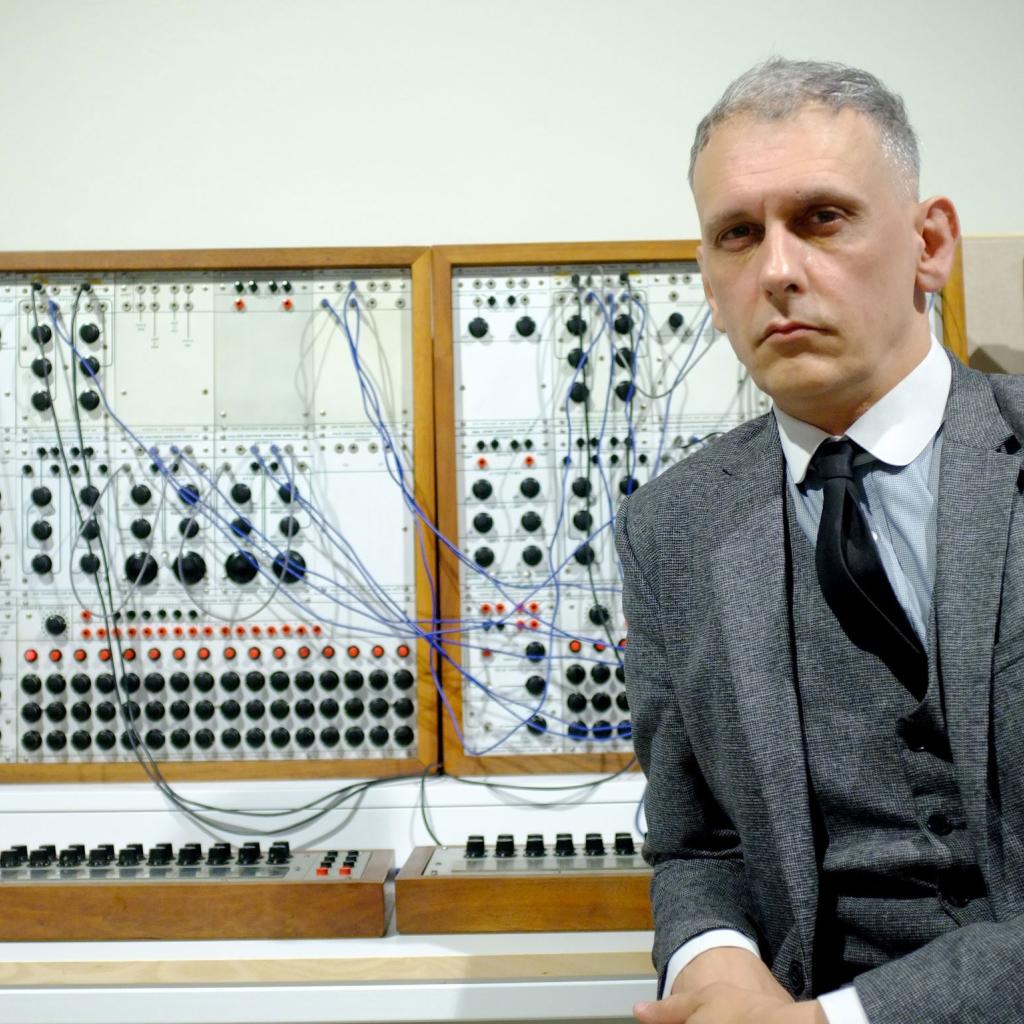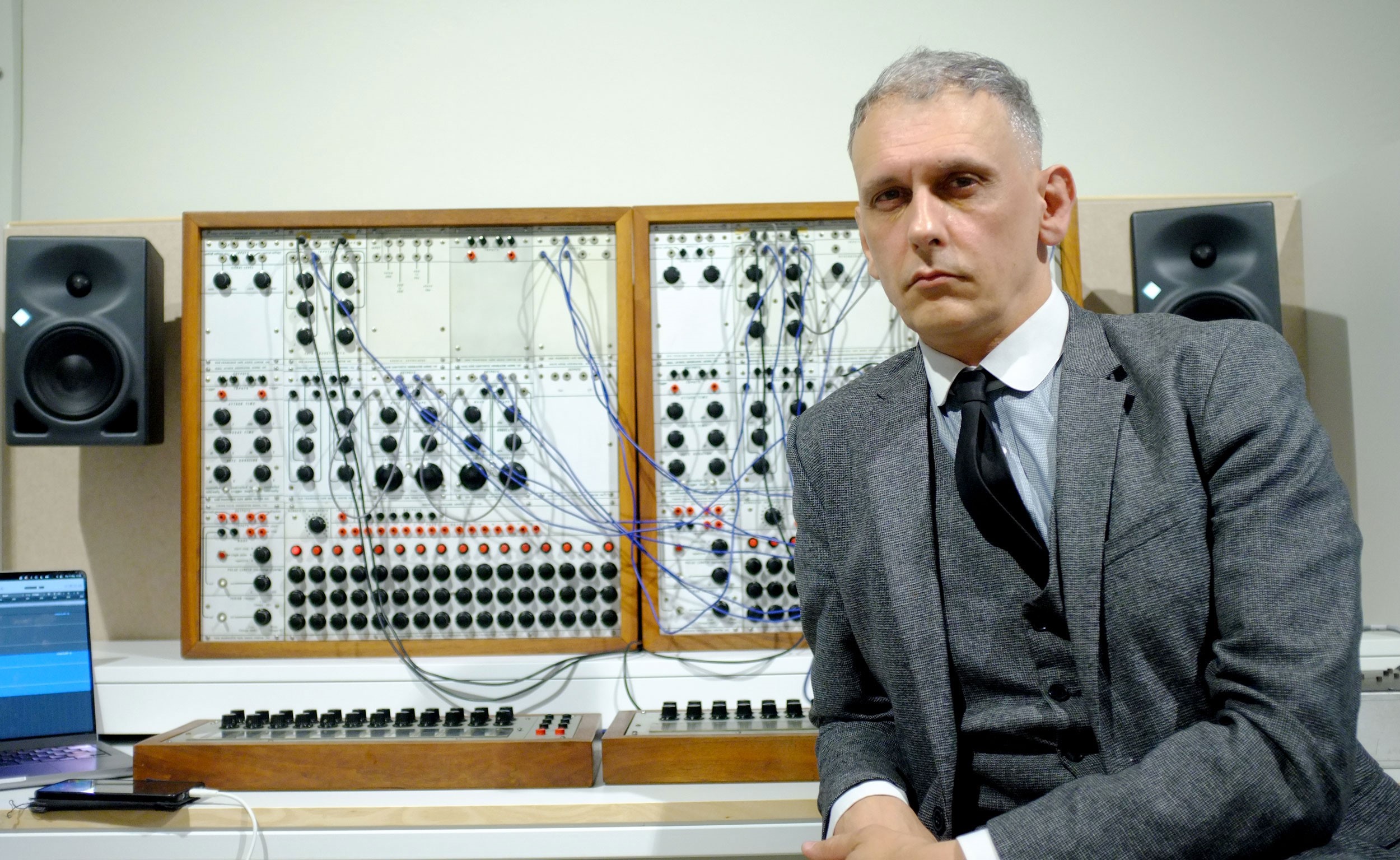A glance at the feet of a giant
Feature by Giorgio Sancristoforo
Not every day you get your hands on the instrument of one of the greatest composers of the 20th century, even less so, when that instrument is one of the rarest handcrafted synthesizers in the world built by a visionary genius named Donald Buchla.
Ernst Krenek's modular 100 system is truly unique not only for its extreme rarity but also because it preserves the imprint of a bold and surprising choice. At the age of 67 Krenek had already composed two hundred works including symphonies, operas, and ballets. It wouldn't have been strange if his electronic production was limited to the 1950s within the studios of WDR in Cologne. Yet, at that age and with such vast experience he decided to acquire an innovative instrument that was radically different from anything that had come before. His encounter with the young Morton Subotnick at the San Francisco Tape Music Centre, who was using the Buchla 100 to record "Silver Apples of the Moon", didn't provoke rejection in Krenek but on the contrary sparked a magnificent desire. What Krenek saw and understood in that moment was the future. Without hesitation he ordered a complete modular system with a special tape recorder from Donald Buchla. Such openness and intuition reveal Krenek's intelligence and ability to perceive the zeitgeist — a gift possessed only by great artists.
The Buchla 100 was the first modern synthesizer predating even Robert Moog's system. Don Buchla began working on it as early as 1963. The idea was to create a portable and powerful electronic music studio using modern transistors aiming to replace or greatly expedite the arduous process of editing magnetic tape, that had characterized electronic music in the previous decade. With its modules dedicated to sound generation, manipulation and sequencing, the synthesizer allowed for a radically different approach from the practices of the old electroacoustic studio. The abundant and versatile resources of the synthesizer effectively realized the vision of a "musica ex machina,” unfiltered by the interpretation of a performer and a direct expression of the composer's will as prophesied by Edgar Varèse at the dawn of the 20th century.
Today the analog modular synthesizer is one of the most widespread musical instruments in the world used in both classical and popular music practices, from experimental music to techno, from electroacoustic to ambient. In fact, there are more modular synthesizers today than ever before despite the technology originating in the 1960s and 1970s. This popularity and diffusion can be attributed to the tangible and flexible nature that these instruments offer. Unlike computers modular synthesizers are tactile responsive and sometimes unpredictable machines. Despite the highly advanced state of computer music today, which is a logical choice for electroacoustic music, modular synthesizers seem to be immune to crises. It is a world in constant evolution and expansion as demonstrated by the bustling trade fairs dedicated to these instruments, such as Berlin's Superbooth, Frankfurt's Musikmesse and Anaheim's NAMM in California. In this vibrant world of sound synthesis, the Buchla 100 remains somewhat of a Holy Grail. Not only is it practically the legendary precursor to all modern modular synthesizers, but it is also cherished for its extreme organicity and expressiveness. That's why it continues to be present with numerous clones (LA67, Tokyo Tape Music Centre, Red Panel, and Buchla).
The four works I created with Krenek's Buchla are not exactly compositions; I would rather describe them as dialogues with the machine. I sat in front of the modular synthesizer and posed questions to which the synthesizer provided answers. I chose four different styles (Subotnick-esque abstract, drone, soundscape, and techno) to showcase the expressive capabilities of an instrument that, theoretically speaking, should be primitive at 56 years of age, but in practice, it is far from it.
In my thirty + years of experience with these machines, I have hardly ever played techno because my musical sensibility aligns better with experimental practices. However, I was curious to see how a 1960s electronic musical instrument would respond, and the result was surprising. This small experiment demonstrates a fundamental fact about technological music that is often misunderstood. There is a common misconception that electronic music is solely a product of technology. For instance, it is often believed that music played on the theremin or Ondes Martenot or Wendy Carlos' interpretations of Bach's music on the Moog synthesizer can be categorized as electronic music. In reality, they are classical music performed with technological instruments. Electronic music, like any other musical genre, originates from aesthetic and compositional needs and is not simply a byproduct of technology. Therefore, in 1967, the Buchla could have easily been used to produce techno music, but that did not happen because the necessary musical thought for its creation did not yet exist.
Krenek approached his electronic music by creating his own language, adapting the machine to his ideas without being overwhelmed by it.
One of the dangers of electronic music is that, instead of playing the instrument, the musician is played by the instrument. It is the other side of the coin of technology and remains a highly relevant topic in the era of artificial intelligence.
Krenek provided us with a refined and intelligent example of how the musical mind takes precedence over everything and serves as a necessary condition for composing, even with a synthesizer. I hope that wherever he may be, he will perceive my work with his beloved instrument as a humble tribute to his legacy.
Giorgio Sancristoforo worked with Ernst Krenek‘s Buchla synthesizer at Salon Krenek in May 2023. During his stay he created the following works:

